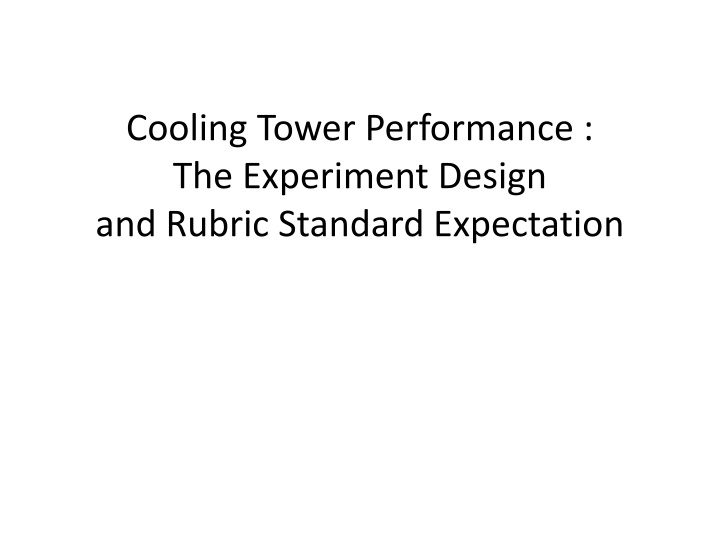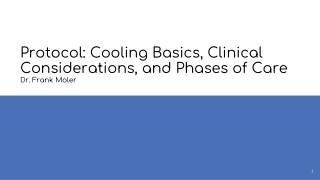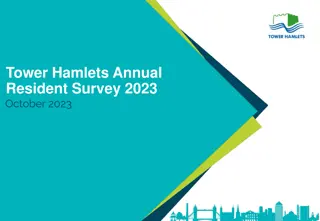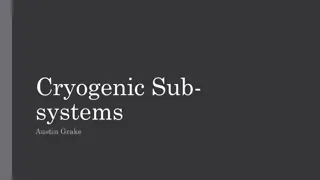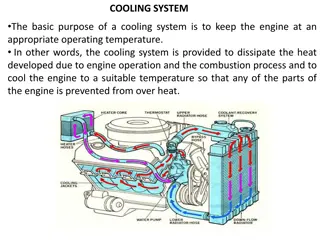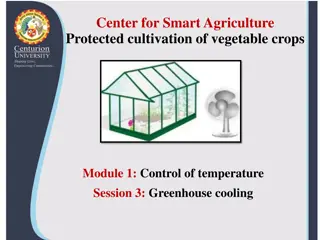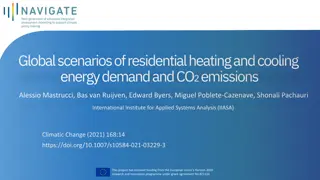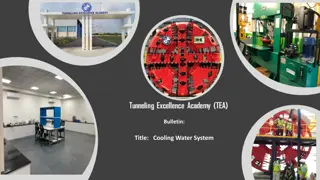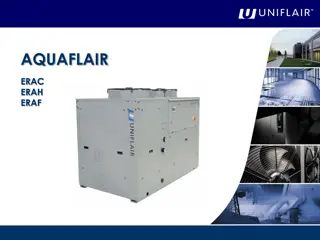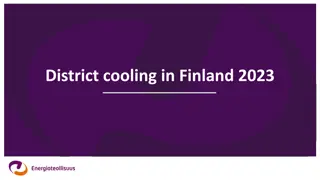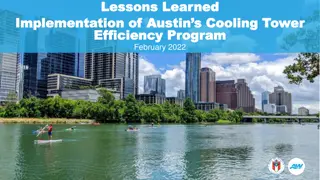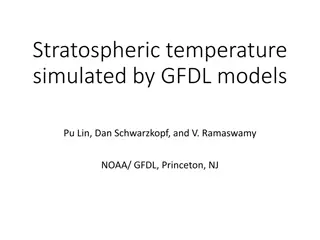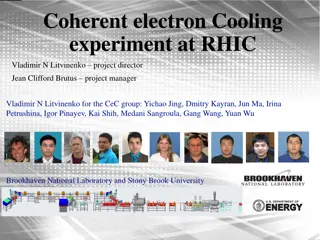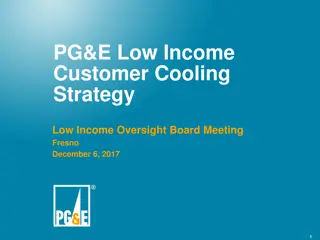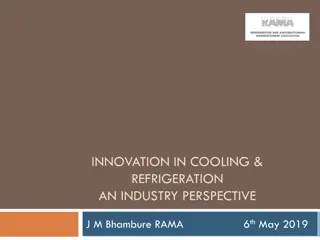Cooling Tower Performance Experiment Design
In this experiment, students learn about cooling towers, psychrometric charts, and how to calculate effectiveness, cooling range, and approach. They also work on creating graphs to analyze the impact of air and water flow rates on cooling tower performance. The objectives focus on understanding the processes involved, using proper tools, and drawing conclusions from the data gathered.
Download Presentation

Please find below an Image/Link to download the presentation.
The content on the website is provided AS IS for your information and personal use only. It may not be sold, licensed, or shared on other websites without obtaining consent from the author.If you encounter any issues during the download, it is possible that the publisher has removed the file from their server.
You are allowed to download the files provided on this website for personal or commercial use, subject to the condition that they are used lawfully. All files are the property of their respective owners.
The content on the website is provided AS IS for your information and personal use only. It may not be sold, licensed, or shared on other websites without obtaining consent from the author.
E N D
Presentation Transcript
Cooling Tower Performance : The Experiment Design and Rubric Standard Expectation
Outline Objectives Design of experiment Graph Example Rubric Standard Expectation (How to meet the expectation on rubric)
Objectives Understand how the cooling tower works Use the psychrometric chart properly Calculate effectiveness, cooling range, approach Create proper graphs for taking the conclusion (effect of air flowrate, effect of water flowrate)
Design of Experiment 1stobjective: student learn performance of cooling tower from sensible and latent heat processes (different number of effectiveness) and effects of air flowrate and water flowrate 2ndobjective : student learn how to use the psychrometric chart properly (searching for the specific humidity, specific volume, specific entalphy)
Design of Experiment 3rdobjective : student calculate from their data, effectiveness, cooling range and approach 4thobjective : student learn how to create graphs for seeking the conclusion (plot of water flowrates vs cooling range and effectiveness, and plot of air flowrates vs cooling range and effectiveness). The student have to be carefull in selecting their results (searching for equal treatments except the independent variable)
set variables : Water flowrate (I,T), Air pressure (T), Load (T) 4th experiment Graphs : 1) Water flowrate (I)/Effectiveness and Cooling Range 2) Air flowrate (I)/Effectiveness and cooling range Data : T1,T2, T3,T4, T5,T6 2nd psychrometric Effectiveness (D), Cooling Range (D) Approach (D) Air flowrate (I) 3rd theory 1st Conclusion, Effect of air flowrate Effect of water flowarate discussion
Rubric Standard Expectation
Rubric Standard Expectation
Rubric Standard Expectation
Rubric Standard Expectation
